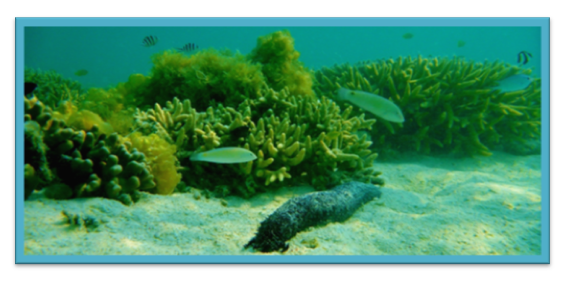Comprehensive Description
As its name indicates, the black sea cucumber, Holothuria leucospilota, is a large, black sea cucumber species, which, in the light, often has a red tinge to its colouring. It is identifiable from other sea cucumbers by its feathery, feeding tentacles and the small spicules which cover its long, cylindrical body.
When disturbed, H. leucospilota will usually retract its body, to hide back under the coral rocks which already protect the posterior end of its body. The species has been shown to contract its body to less than one third of its original extended length, demonstrating the ability of this species to deform and manipulate its body (Motokawa 1984). When agitated H. leucospilota ejects sticky, stringy, white tendrils called the Cuvierian tubules. These are thought to be a defence mechanism, to entangle potential predators.
H. leucospilota can be found in shallow water areas in the Indo-Pacific Region (Conad, Morel & Mussard 1997), usually with the front half of its body protruding out to feed. The rest of its body usually hides under coral masses or in rock crevices, which are a common feature of the reef flats where it is predominately found. A non-selective deposit feeder, H. leucospilota is often seen using its tube feet to move slowly across the sandy substrate.
Populations consist of separate male and female individuals, although there is no sexual dimorphism for this species, as in the majority of Echinoderms. Reproduction in H. leucospilota is either by sexual reproduction via spawning, or by asexual reproduction by fission, which both help increase the population (Purwati & Luong-van 2003).
H. leucospilota is not only valuable ecologically, playing a key role in the carbon cycle (Mangion et al. 2004), but also economically, because it is very valuable amongst many inshore fisheries around the world (Drumm, Purvis & Zhou 1999).
|
|
|
|
|
|

|
| |
|
|
|
|
|
Image 1. Holothuria leucospilota is abundant on the reef flat surrounding Heron Island, often seen with its anterioir protruding out from under the coral, while it feeds with its feathery tentacles.
|
|